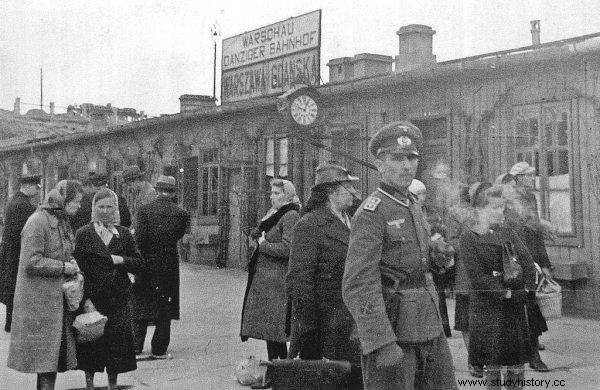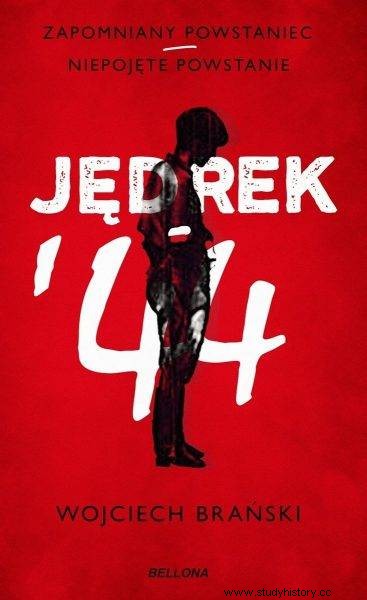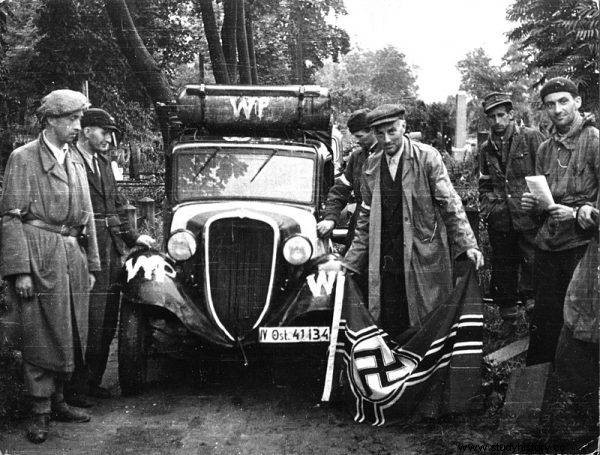It was one of the most tragic episodes of the Warsaw Uprising. The advantage of the enemy, serious lack of equipment, critical errors of the command - attacks on the Gdańsk Railway Station on the night of 20/21 and 21/22 August 1944 had no chance of success. Nevertheless, the Poles fought the occupiers.
The Warsaw Uprising proves that the enthusiasm for fight and the vision of freedom are not all that soldiers need in battle. Perhaps it is best seen in the example of the attacks on the Gdańsk Railway Station, manned by numerous and well-equipped German troops, which was a kind of barrier separating the Home Army units in the Old Town and Żoliborz. Unfortunately, the only effect of the night attacks was a huge loss of people ...
Lost case
The Germans kept very strong troops at the station and along the tracks, supported by artillery and an armored train. No wonder - since the invasion of the USSR, Warsaw has become one of the most important communication hubs ahead of the Eastern Front. To make matters worse, the command of the Home Army had incorrect information on the actual number of German troops and their capabilities.

The Gdańsk Railway Station was a kind of barrier separating the Home Army troops in the Old Town and Żoliborz.
According to various estimates, from less than 1,000 to 1,500 untrained and poorly equipped people were thrown into the fight against the occupier who often didn't even know their leaders. In the book Jędrek '44 Wojciech Brański describes:
Weapons and ammunition were the most valuable things for the insurgents, more important than food, clothes or a girl. (...) Most often you received weapons after participating in combat with grenades, which were more than rifles. Either after the killed German or… a fallen colleague .
The partisans led by Major Alfons Kotowski "Okon", who came to Żoliborz from Kampinos, were perhaps slightly better equipped, but they still lacked training and knowledge of Warsaw, in which they simply lost themselves. The nightly marches were dragged on and, moreover, communication between the divisions was poor. When it finally came time to start fighting, the soldiers were tired all night long wandering around.
With a hoe to the sun
As ordered by the Home Army Headquarters, the first attack began on the night of August 20-21. According to the plan, the attackers were to cover an approximately 300-meter section running through allotments and then climb a gentle slope separating the green areas from the track. Along the way, some of the troops were to capture the burned barracks - but here it turned out how serious a mistake the commanders had made.
Insurgent Edward Bonarowski recalled:
In the area of the burned barracks German infantry waited and the allotments were flooded
artillery fire:from the Cytadela, Buraków, Słodowiec, the Chemical Institute and ul. Inflancka. For those who jumped over the artillery line, in the barracks and on the slope above the tracks, previously unrecognized machine gun nests were waiting. .

The text was created, among others based on the book by Wojciech Brański "Jędrek '44", which has just been released by the Bellona publishing house.
(...) The platoon commanders of the time, still alive today, cannot understand how it was possible to assure at the commanders' briefing that no enemy should be expected ahead of the tracks, when at that time along of the track was a whole belt of German machine gun nests.
Some units managed to reach the tracks, but the defense was so strong and the losses so great that the second throw of the Żoliborz units did not even start the fight. The Germans illuminated the battlefield with flares and fired on the insurgents with heavy machine guns and grenade launchers from safe bunkers.
Fight parody
The next night, the attack was renewed. This time, the insurgents even managed to break through to the other side of the tracks and continue towards the Old Town and Muranów. Unfortunately, this was the end of the Home Army's successes in capturing the Gdańsk Railway Station - errors in signaling and an even sharper response from the German side (this time with the participation of an armored train) caused further losses on the Polish side - greater than on the first day.
As the commander of one of the units, Edward Bonarowski commented:
A parody of the fight! LMGs against heavy machine guns, fifth [grenade launchers] against a long armored train; repeating rifles - Soviet "nines" - also fired. Only for what purpose? Thoughtlessly..? To scare the Germans?

The blame for the failure was blamed on the not very popular major Alfons Kotowski "Okoń".
And this was actually the end of the attempts to capture the Gdańsk Railway Station. On August 22 in the morning, General Tadeusz Pełczyński "Grzegorz" informed Colonel Karol Ziemski "Wachnowski" that the attack could be renewed, but at the same time suggested other forms of helping the Old Town. The decision was made to abandon the attack, and the blame for the failure was placed on the not very popular major Alfons Kotowski "Okoń", responsible for organizing support for the Kampinos (so-called "forest") troops.
It is estimated that on the side of the insurgents about 500-600 of the 1,300 soldiers involved in the fight were killed or injured . According to Polish sources, about 50 were killed and 25 were injured.
